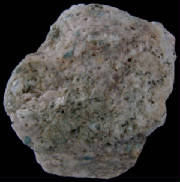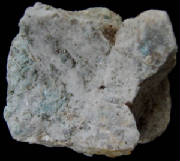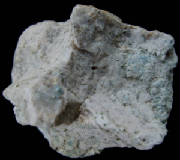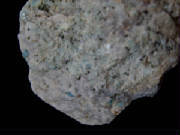|
Lazulite Specimens
Lazulite is a blue, phosphate-based mineral containing magnesium, iron, and aluminium phosphate. Lazulite
forms one endmember of a soli solution series with the darker iron rich scorzalite. It forms by high grade metamorphism
of high silica quartz rich rocks and in pegmatites. It is considered a semi-precious gemstone. It is often confused with lazurite,
lapis lazuli or azurite. Lazulite crystallizes in the monoclinic system. Crystal habits include steep bipyramidal or
wedge-shaped crystals. Lazulite has a Mohs hardness of 5.5 to 6 and a specific gravity of 3.0 to 3.1. It is infusible and
insoluble. It was first described in 1795 for deposits in Austria. Its name comes from the Arabic for heaven.
|
|

|
| Click on photo to enlarge in new window. |

|
| Click on photo to enlarge in new window. |
|
Palm-sized chunk of white quartzite from Graves Mountain, Lincoln County, Georgia with lots of little embedded lazurite
and pyrite crystals. Approx. size: 60x52x35 Weight: 143.5 gm.

|
| Click on photo to enlarge in new window. |
|

|
| Click on photo to enlarge in new window. |
|
|



